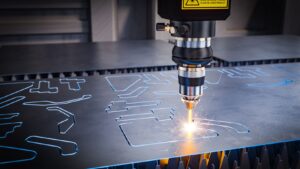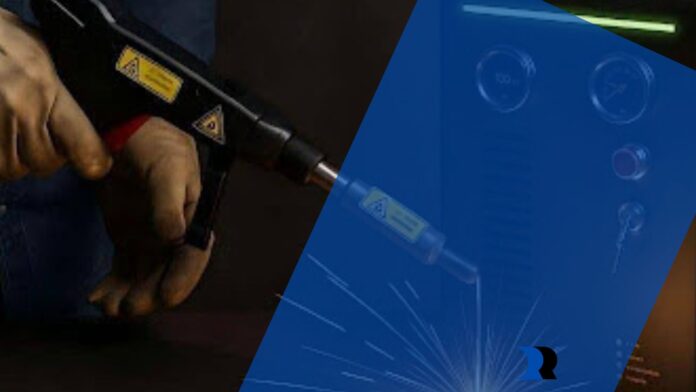As a design engineer, I’ve come to appreciate how much a single innovation can shake up an entire process. One that’s been doing just that lately is laser welding. It’s not just a buzzword—it’s a real shift in how we approach joining materials, offering a level of precision and efficiency that old-school methods just can’t touch.
In this article, I’ll walk you through how laser welding is changing the game in design and manufacturing. We’ll dive into the perks—better joints, faster production, and more freedom for creativity. I’ll even sprinkle in a few real-world scenarios where engineers are using this tech to build smarter, not harder. Whether you’re deep into product development or just poking around out of curiosity, this will give you a fresh perspective on where design might be headed next.
How Design Engineers Integrate Laser Welding into Product Development
Laser welding isn’t just some flashy tool—it’s a practical upgrade for how we build things. When we swap out traditional welding for an industrial laser welder, we’re not just making cleaner welds. We’re getting stronger joints, tighter tolerances, and fewer production headaches.
This process gives us more control over the materials we’re working with. You want precision? You got it. Need to work with different thicknesses or alloys? No problem. The flexibility here is a real win for engineers who are constantly juggling performance, cost, and manufacturability.
Key Benefits of Laser Welding
- Speed: Jobs that used to take hours can now be done in a fraction of the time. It’s a serious time-saver.
- Precision: Ideal for intricate parts where accuracy isn’t just nice—it’s non-negotiable.
- Flexibility: Whether it’s thin sheet metal or something more robust, laser welding handles it with ease.
- Reduced Distortion: Since the heat is concentrated and minimal, you don’t get the same warping issues that plague traditional methods.
Take the automotive industry, for example. Laser welding is used in structural applications, such as body panels and frames. The results? Lighter vehicles that are still incredibly strong and crash-safe.
In electronics, the fine control helps assemble complex components with pinpoint accuracy. And honestly, I think we’re just scratching the surface of what’s possible.
Introduction
I’ve seen laser welding steadily become a go-to tool for design engineers, and it’s easy to see why. Traditional welding has its place, sure, but when it comes to demanding designs and tight deadlines, laser welding brings a whole new level of capability to the table.
One of the biggest advantages for me has always been precision. An industrial laser welder—especially models from companies like Denaliweld—can hit exact tolerances without overheating or distorting nearby components. That low heat input really pays off, especially when you’re dealing with sensitive materials.
And let’s talk about speed. Faster welds mean shorter production cycles, which can be a huge edge when timelines are tight. Add in its compatibility with a wide range of materials, and you’ve got a pretty versatile tool.
The applications are already impressive—from lighter, safer cars to compact electronics that just wouldn’t be possible with bulkier welds. I’m honestly excited to see where the technology goes from here.
Understanding Laser Welding
Laser welding isn’t magic, but it’s close. At its core, it’s about using focused light energy to melt and fuse materials—usually metals—with incredible accuracy.
Definition and Core Principles
So what exactly is going on here? A laser beam—usually from an industrial laser welder—is directed at the joint area, where it melts the materials and forms a bond as it cools. The real beauty of this process is how tightly controlled it is. The beam can be focused down to a tiny point, meaning the heat goes exactly where you want it. That means less distortion and better structural integrity in the final product.
Advantages Over Traditional Welding Methods
There’s a reason more engineers are making the switch:
- Speed: Jobs that might take several passes with a MIG or TIG welder can be done in one go.
- Precision: Especially useful in industries like automotive or electronics, where small errors can have big consequences.
- Material Flexibility: Laser welding plays well with different materials, even tricky combos like metal to plastic.
- Less Distortion: Lower heat means less risk of warping, especially useful in detailed assemblies.
All this adds up to a method that’s not only faster and cleaner but also more adaptable to the increasingly complex demands of modern design.
Integration into Product Development
Bringing laser welding into the design process isn’t just a technical choice—it’s a strategic one. When done thoughtfully, it can make life a whole lot easier down the road.
Early Design Considerations
Right from the get-go, I’m thinking about how the welds will affect the final product. Will it hold up under stress? How will the heat impact nearby materials? Having access to an industrial laser welder early in the process lets me test assumptions and tweak joint designs before anything goes to production.
It’s all about asking the right questions up front: Are the materials compatible? Will the joint geometry work with the laser’s path? Sketching and modeling help catch issues before they become problems.
Simulation and Modeling Tools
I lean heavily on simulation software during development. It’s a lifesaver when it comes to understanding thermal dynamics or how stress distributes across a welded joint. Virtual models give me insight into how the weld will behave under real-world conditions, which lets me optimize before cutting any metal. It’s efficient, and it keeps surprises to a minimum.
Collaborative Development and Prototyping
Working closely with manufacturing teams is critical. We talk through tolerances, run weld tests, and share feedback on early prototypes. That back-and-forth helps ensure that what we design is practical to build. It’s also a great way to catch oversights and incorporate new ideas on the fly.
Applications Across Industries
Laser welding isn’t just for niche use cases. It’s showing up across industries where speed, accuracy, and strength are non-negotiable.
Automotive Industry
Cars today are safer and more efficient thanks, in part, to laser welding. It’s used on everything from roof joints to crash structures. The reduced heat distortion means better fit and finish, while the strong, clean welds help with crashworthiness. Industrial laser welders keep production moving fast without sacrificing strength or quality.
Aerospace and Defense
In aerospace, weight matters—and so does reliability. Laser welding is used for precision components like fuel lines and structural supports. The ability to weld without compromising the material is a huge win here. Plus, the accuracy ensures compliance with strict industry standards.
Medical Devices
Medical devices demand ultra-clean welds. Laser welding is great for creating hermetically sealed joints, especially in tools like surgical instruments and implants. You also get more flexibility with shapes and materials, which opens the door to innovation in design.
Electronics and Semiconductors
When you’re working with tiny, sensitive components, even a little excess heat can ruin the job. Laser welding gives you tight control over energy input, making it perfect for things like sensors, connectors, and microelectronics. It’s almost like using a scalpel instead of a hammer.
Challenges and Solutions
Of course, laser welding isn’t without its hurdles. But knowing the challenges means you can plan for them, and usually find a workaround.
Welding Dissimilar Metals
Joining metals with different thermal properties can get tricky. Cracks or weak spots can form if you’re not careful. Industrial laser welders help manage this with fine control, and choosing the right filler or hybrid approach (combining laser with TIG, for example) often does the trick. It’s all about understanding how materials interact under heat.
Reflective Materials
Shiny metals like aluminum love to reflect laser beams—definitely not ideal. To counter this, engineers often use lasers at different wavelengths or treat surfaces to improve absorption. Pre-heating can also help the weld take better. It’s a bit of a balancing act, but manageable with the right tools.
Future Trends
What’s next for laser welding? I’d bet on smarter systems, tighter simulations, and a whole lot of AI in the mix.
Integration of Artificial Intelligence
Imagine an industrial laser welder that adjusts itself in real time. That’s the promise of AI—adaptive welding that learns from each pass and tweaks parameters on the fly. The potential here is huge: faster production, fewer errors, and consistently high-quality joints.

Advances in Simulation and Modeling
Simulation tools keep getting better. As they do, they’ll let us model stress, thermal load, and even microscopic defects before we ever hit “start” on the welder. That’s a game-changer for design decisions. The more we can predict, the less we’ll need to fix later.
Conclusion
Laser welding has become a cornerstone in modern product development. With an industrial laser welder in the mix, engineers get the precision, speed, and flexibility needed to tackle today’s toughest design challenges. Whether it’s making vehicles lighter and stronger or crafting ultra-clean medical tools, laser welding delivers results where it matters. Sure, there are bumps in the road—especially when working with mixed materials or reflective surfaces—but there are solid solutions, too.
And the future? It’s looking bright. With AI, smarter modeling tools, and new applications emerging all the time, laser welding is set to play an even bigger role in how we design and build the world around us.


